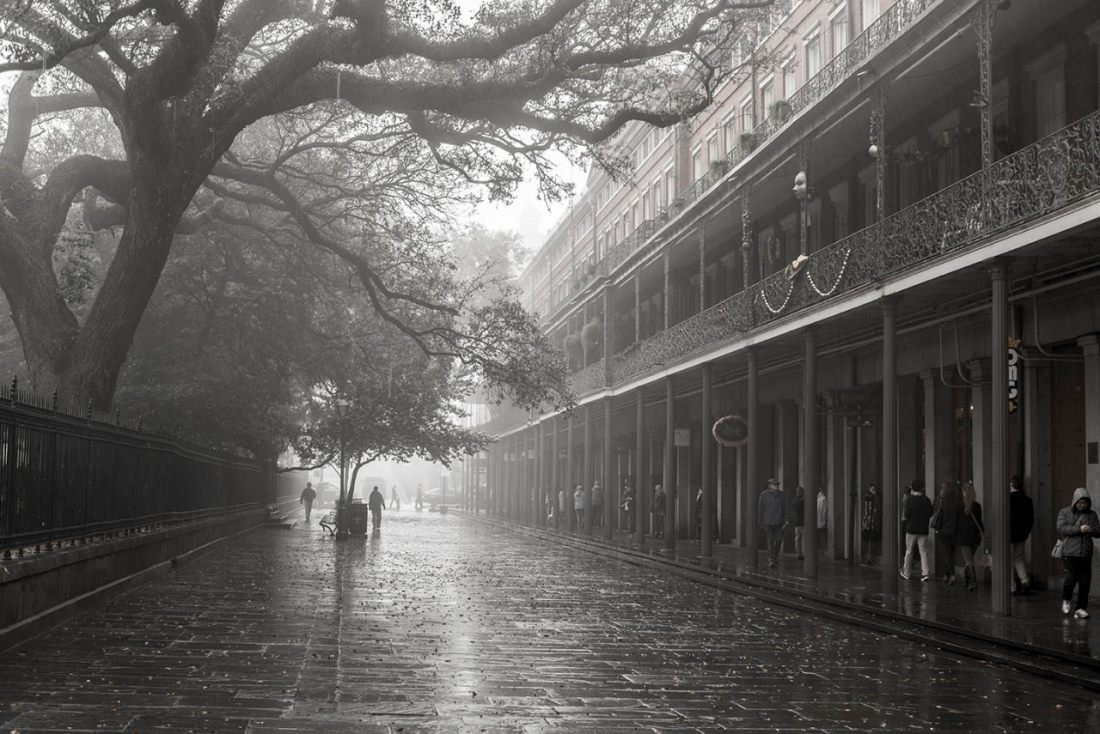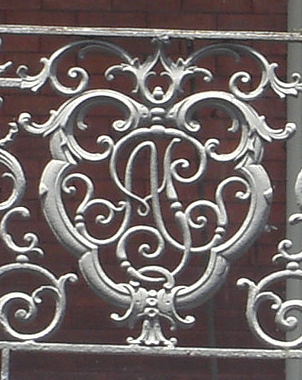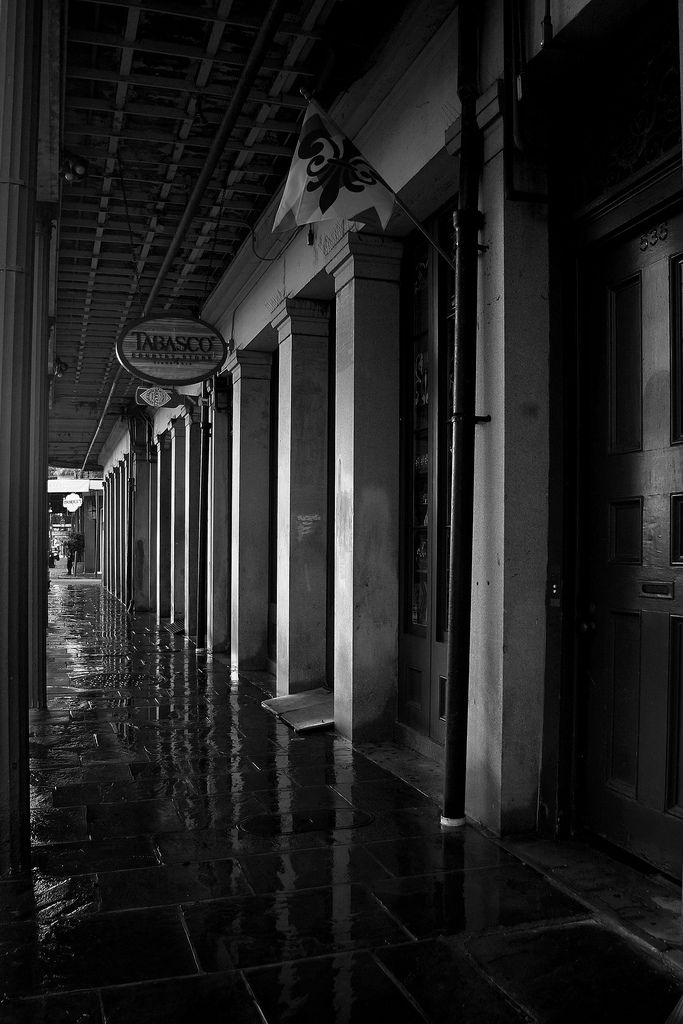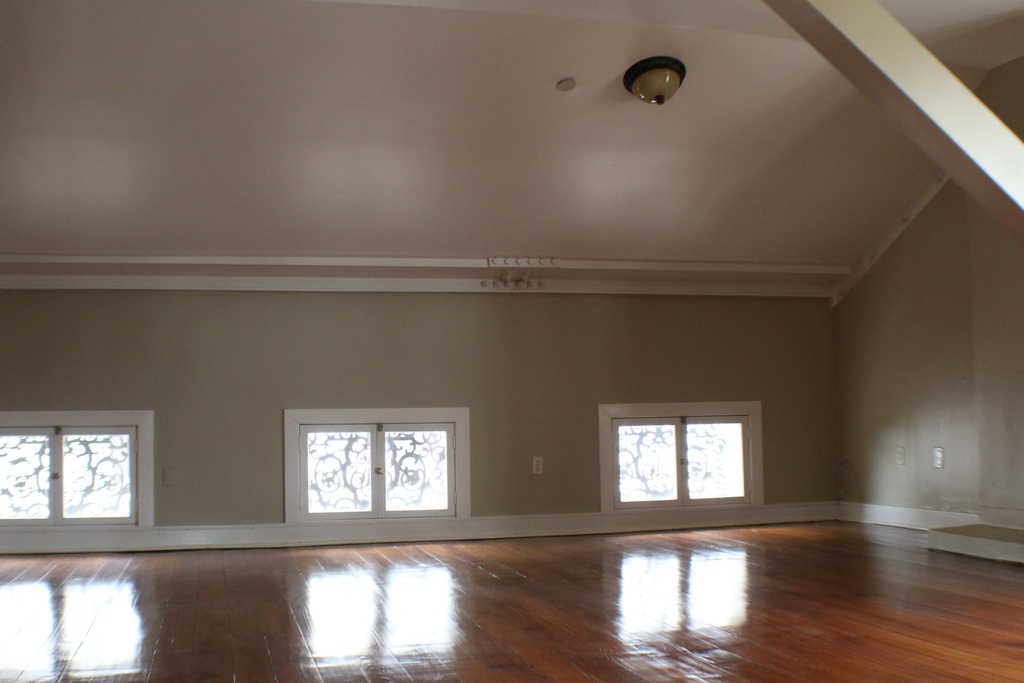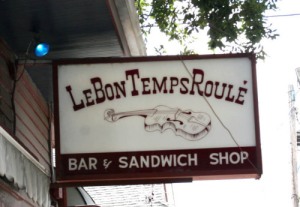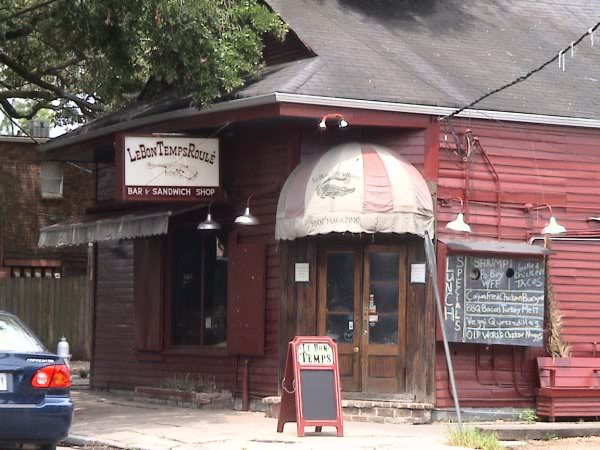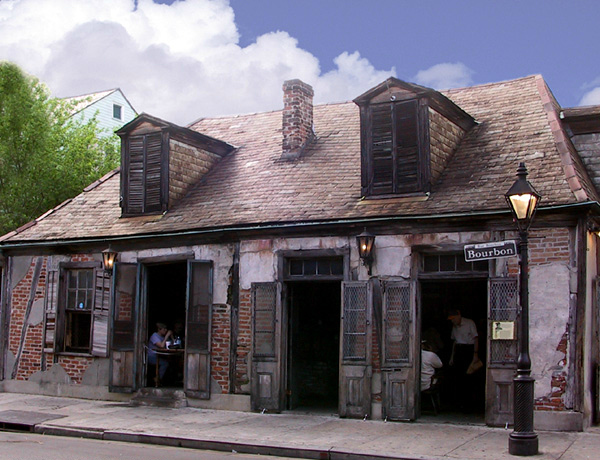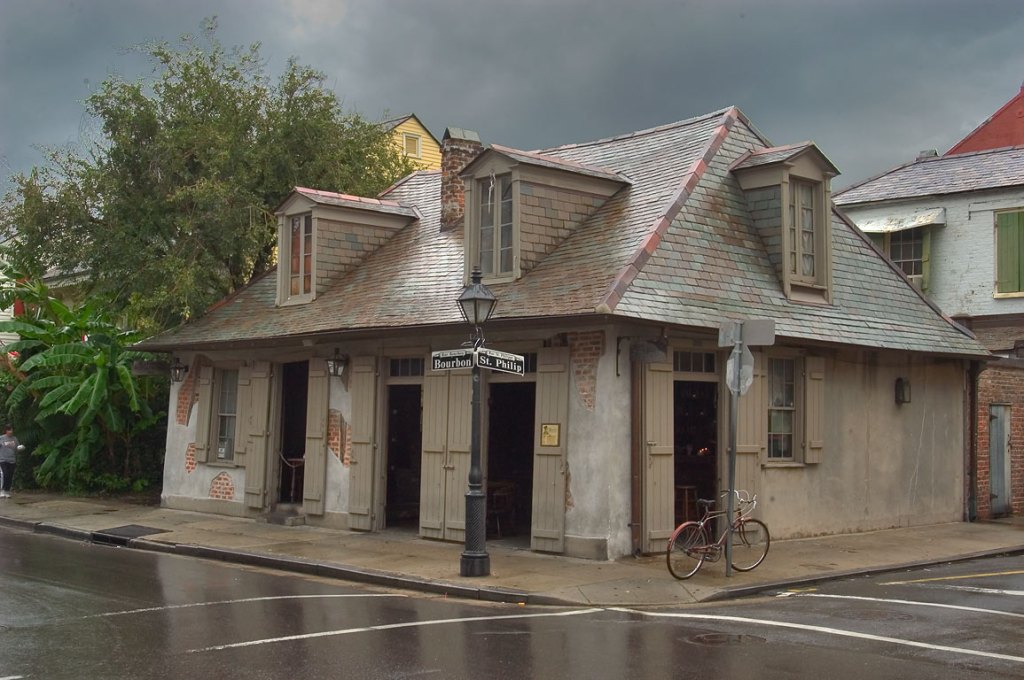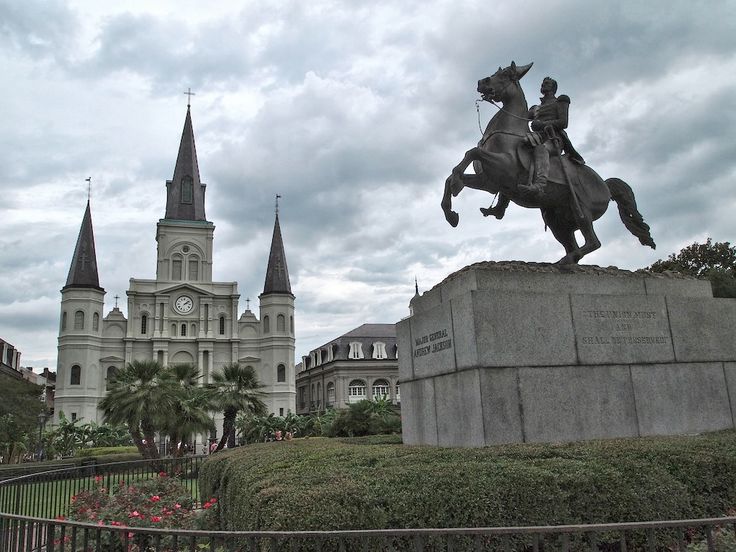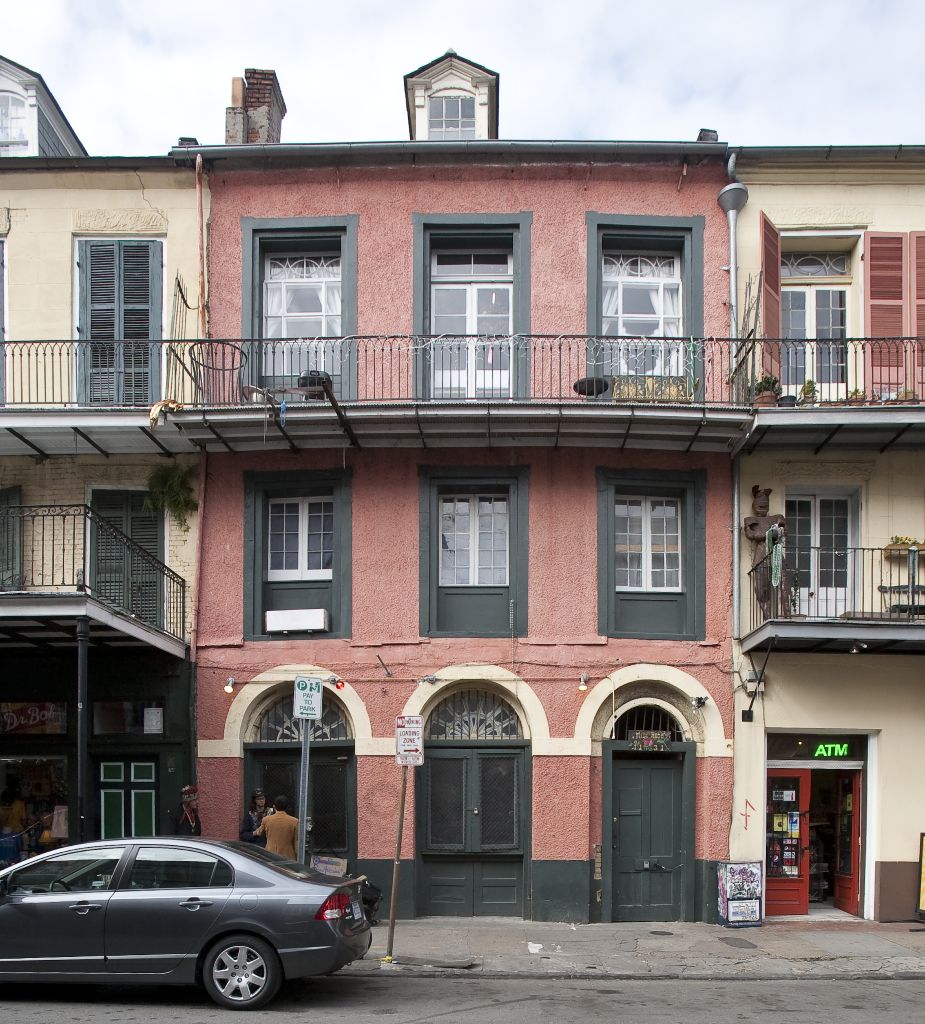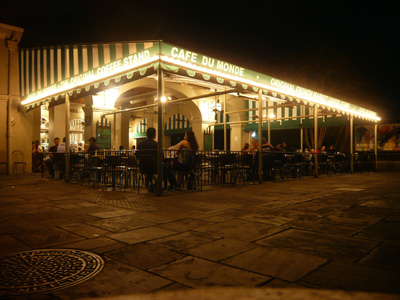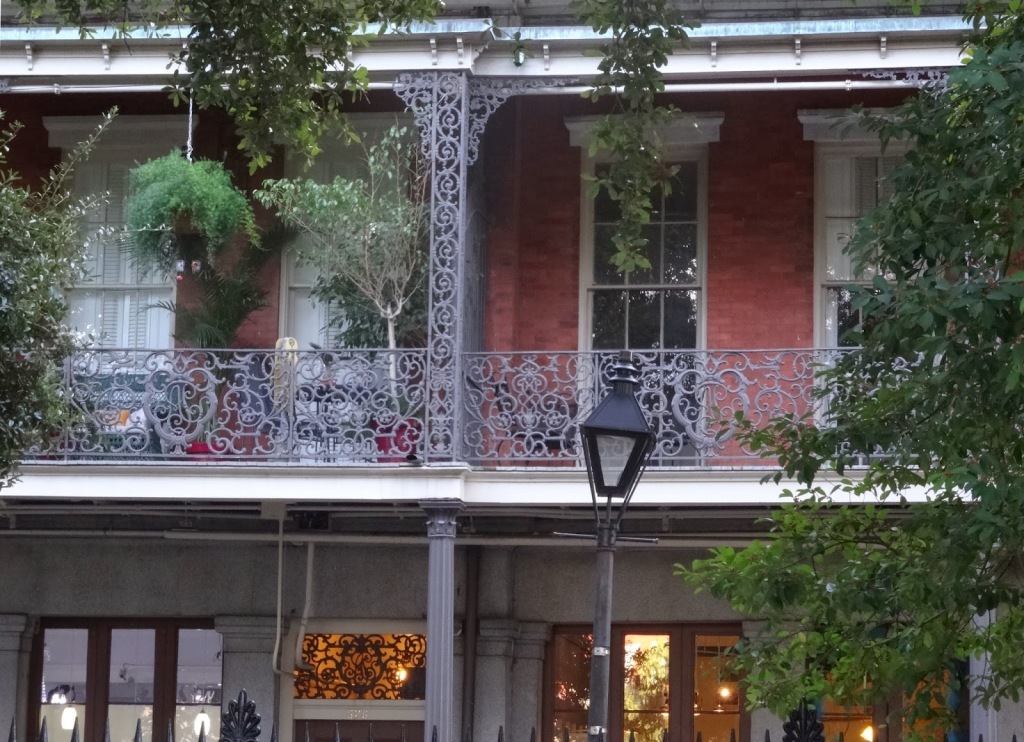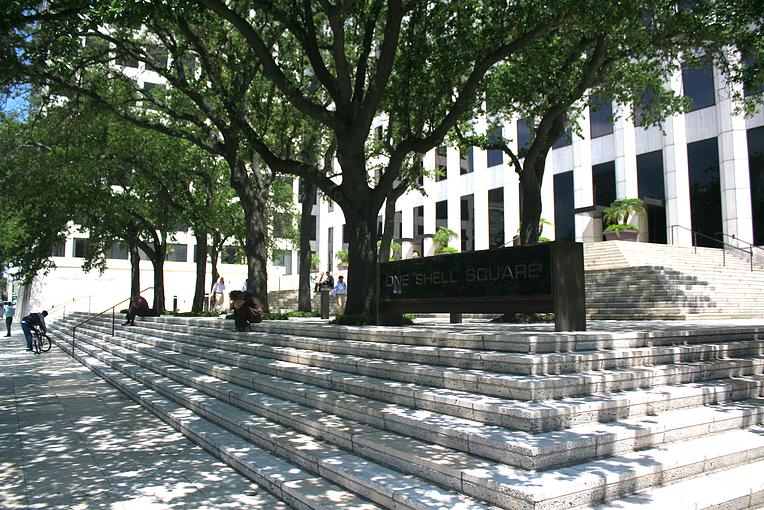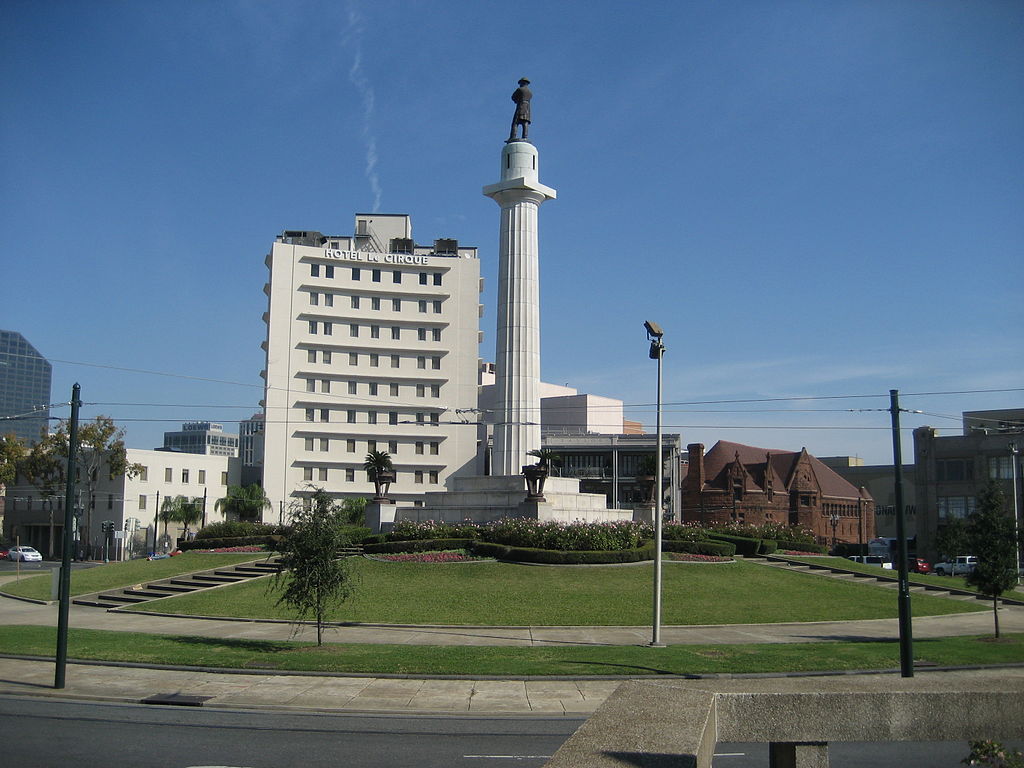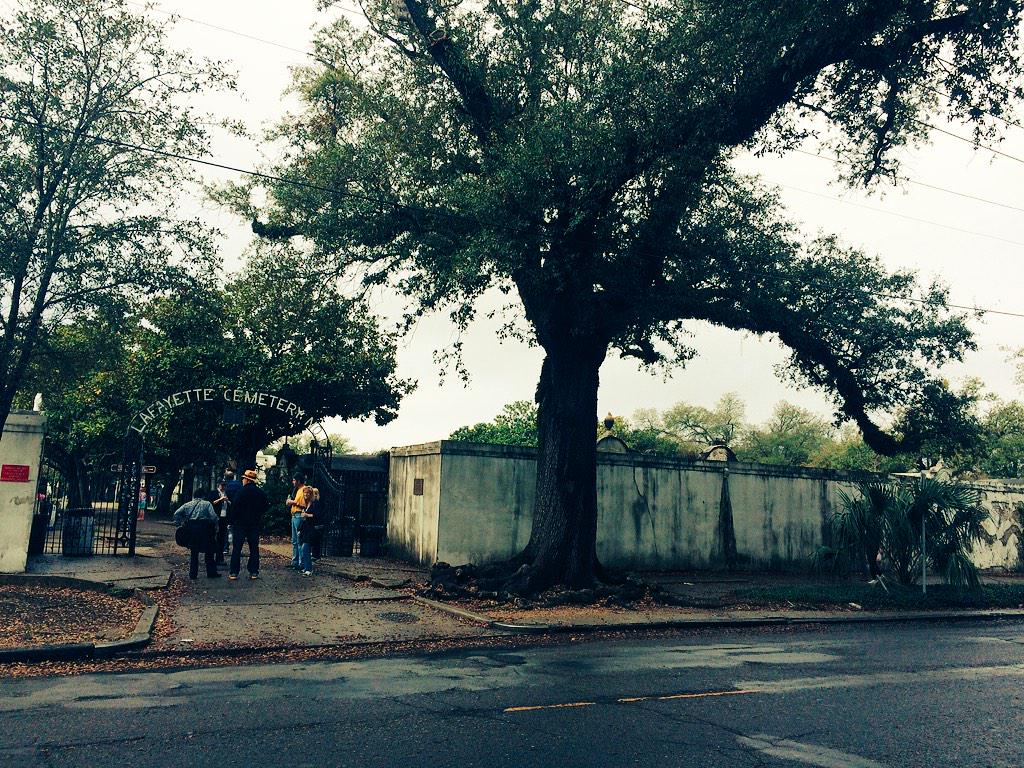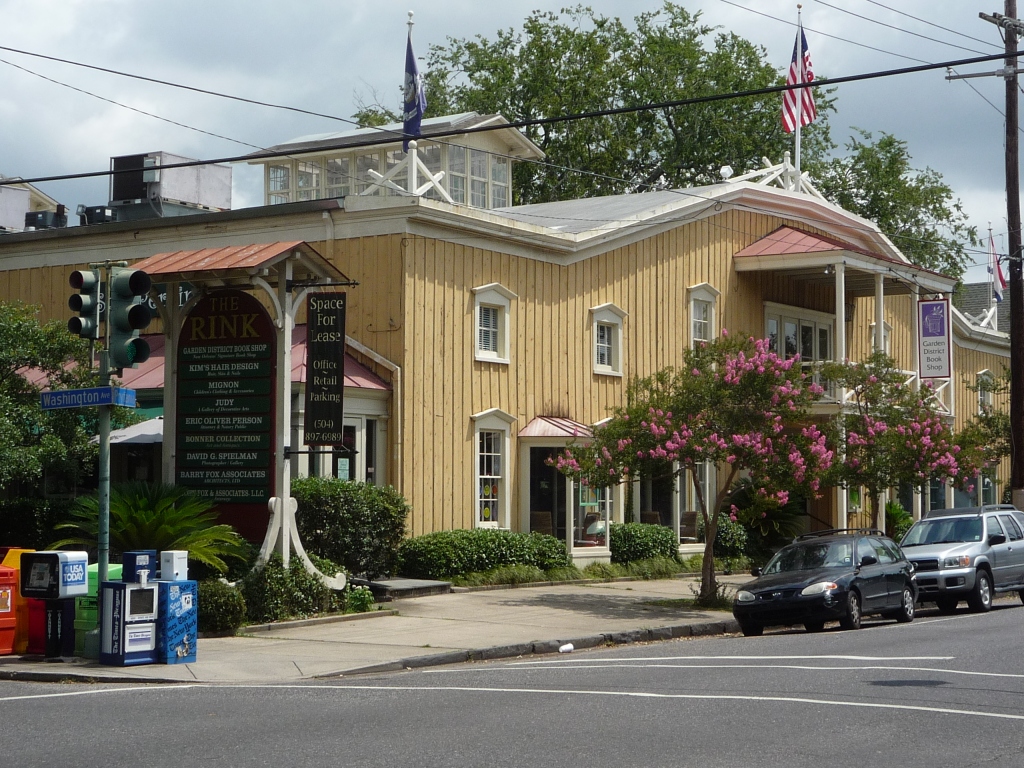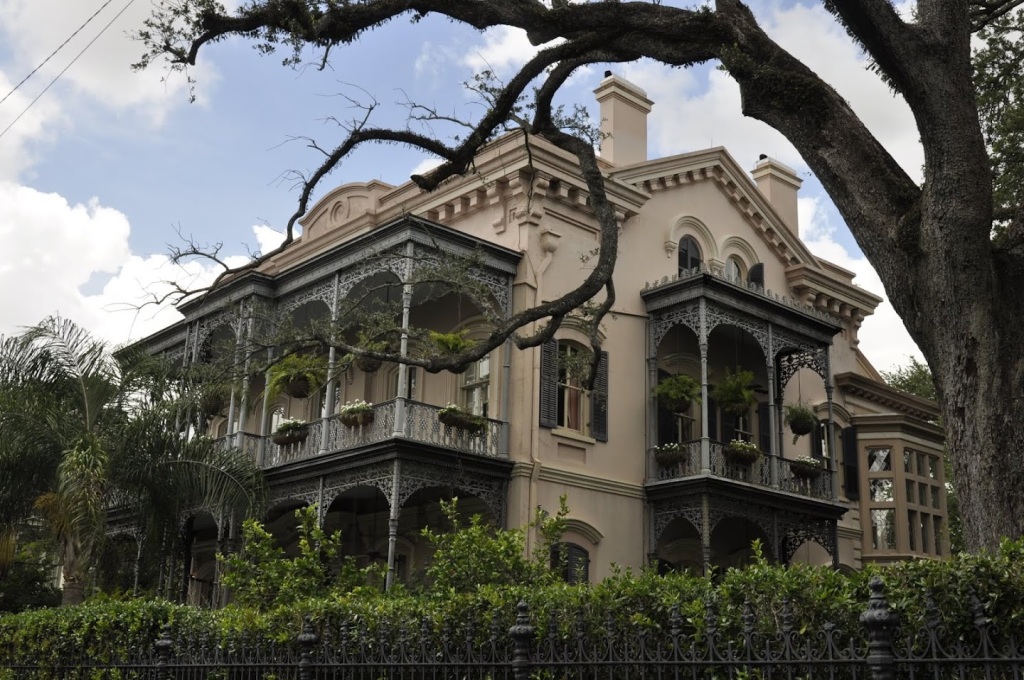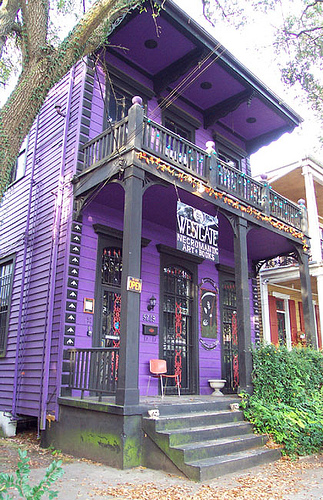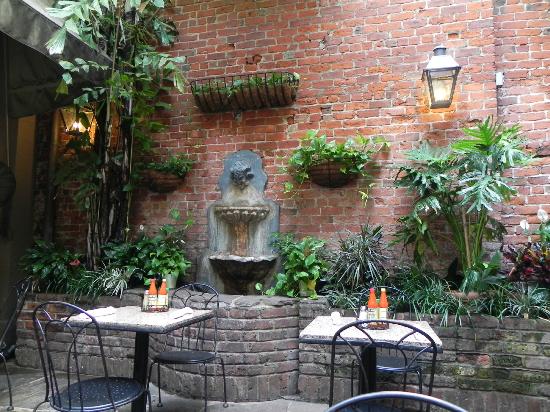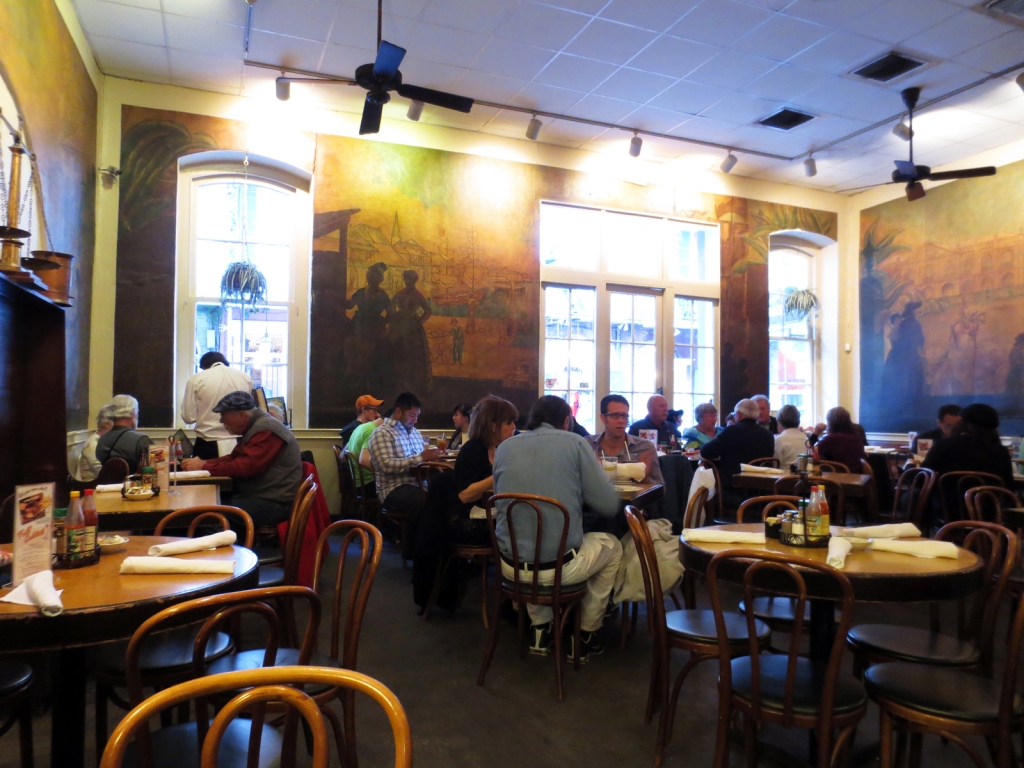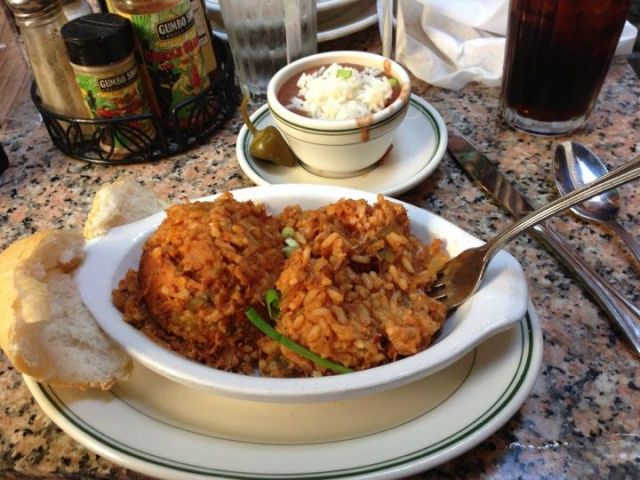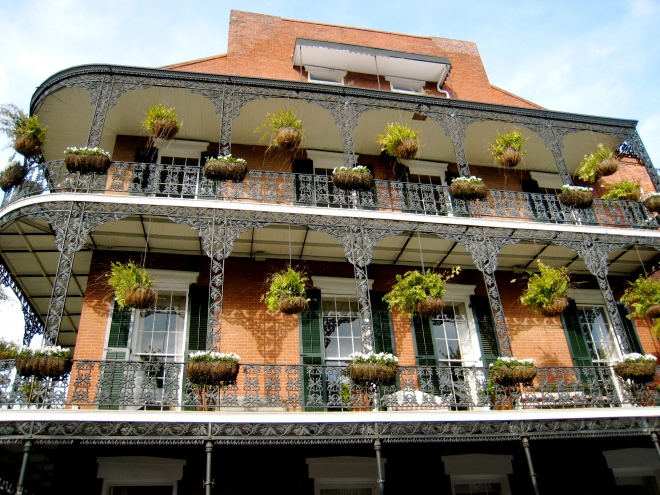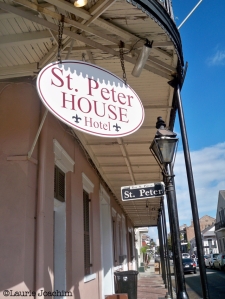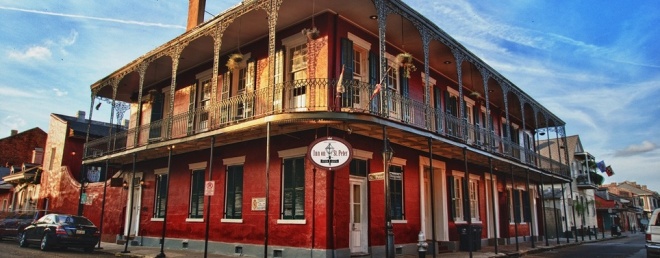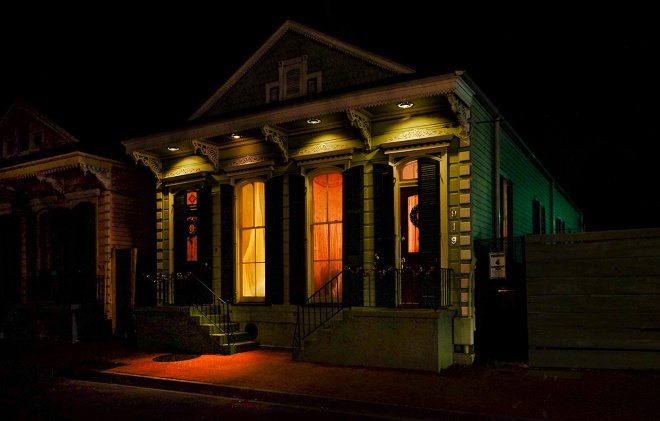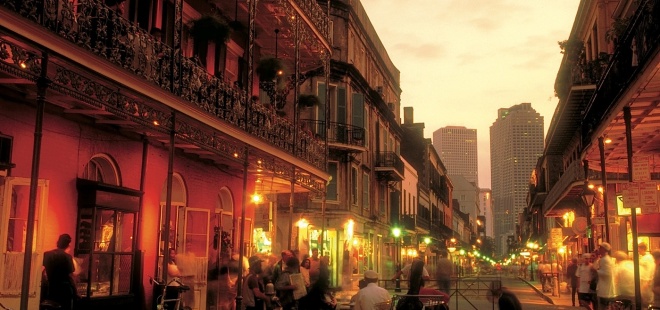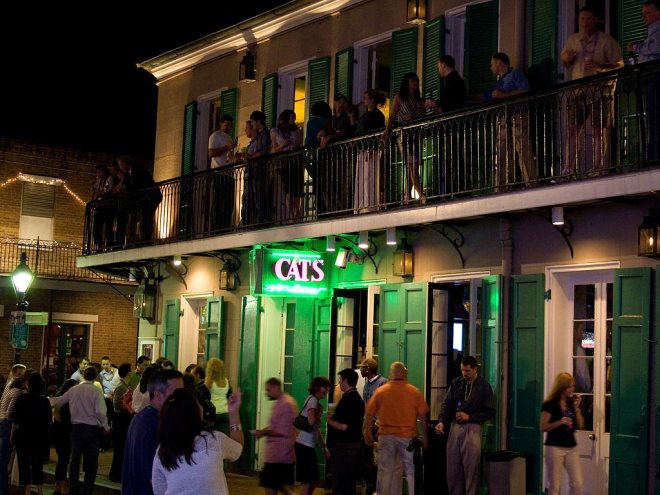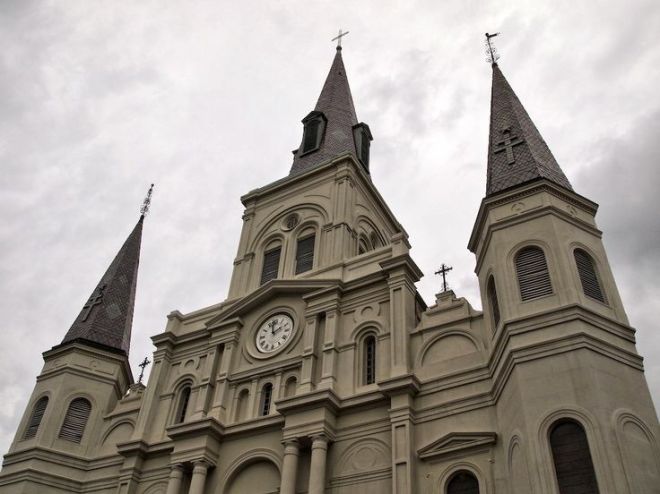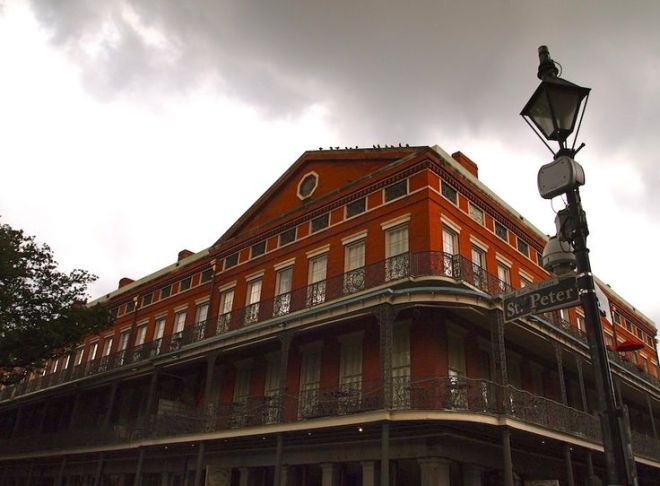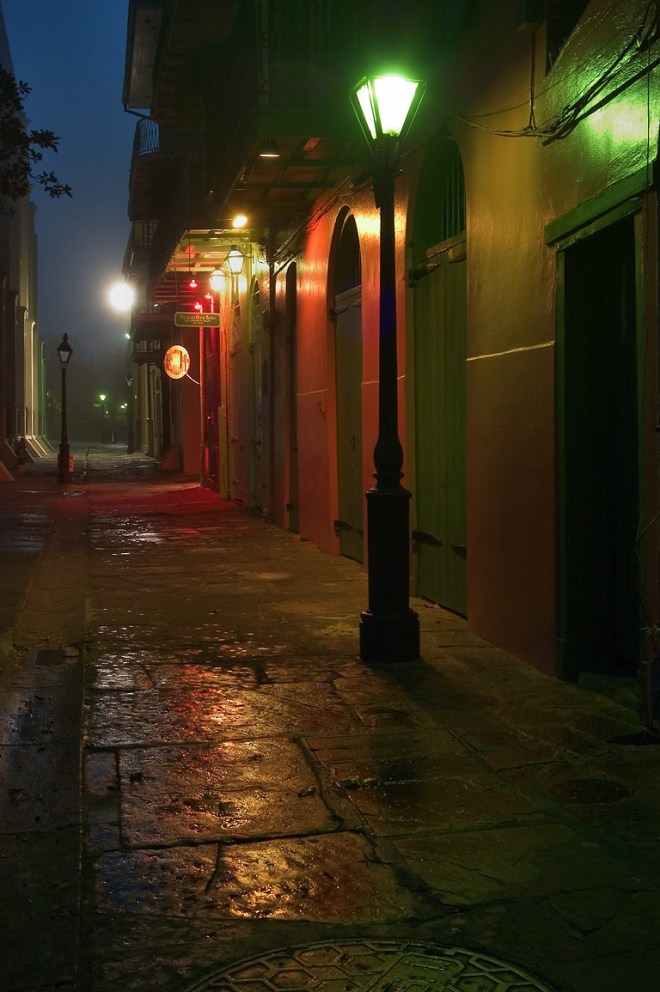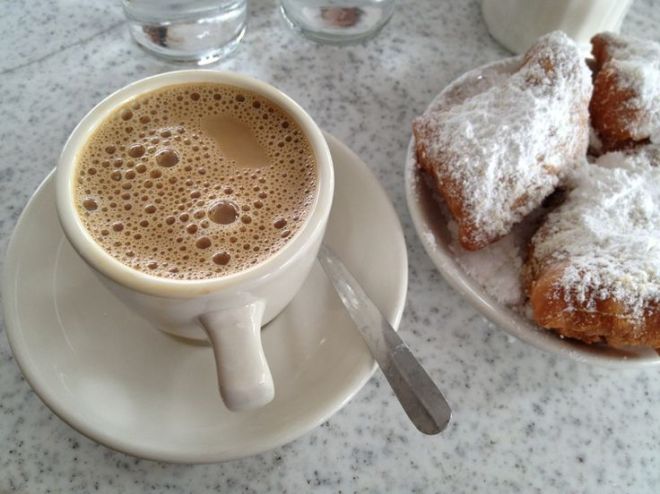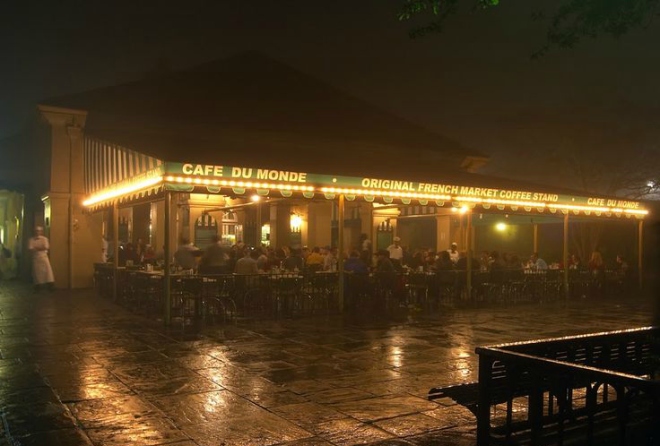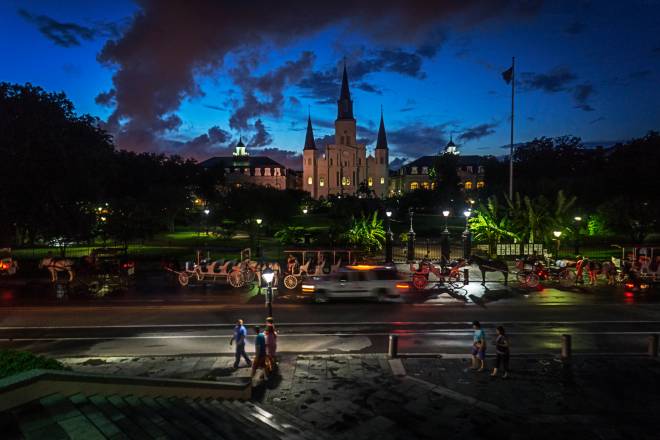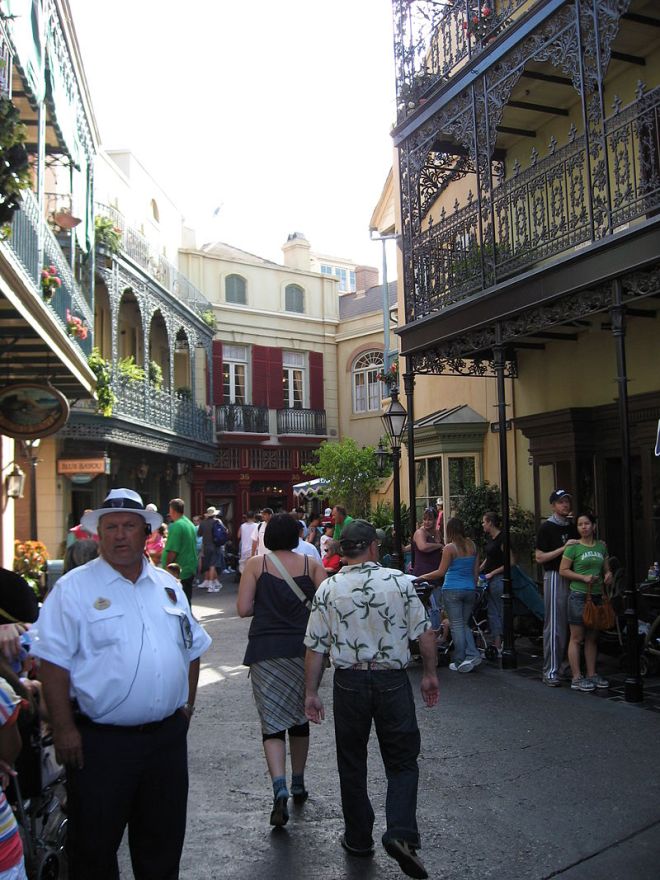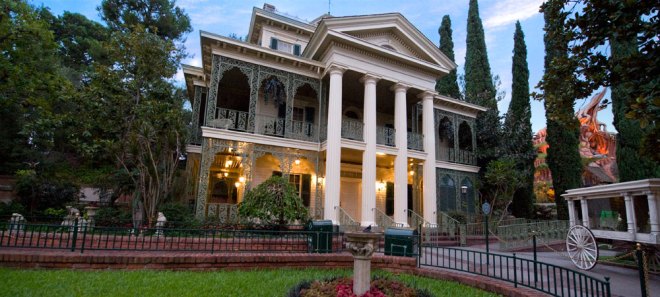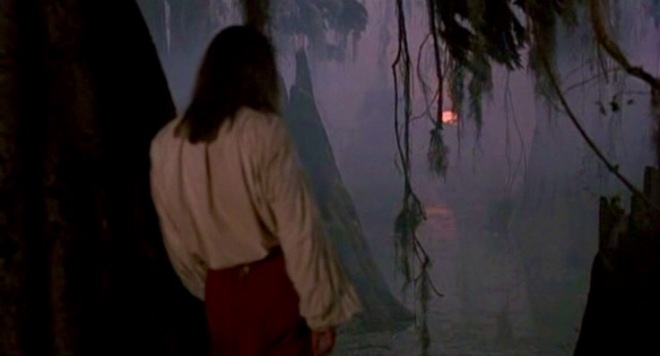(New to this blog series? Read New Orleans. Part One.)
The 1995 move to New Orleans lasted two weeks. The 1997 move lasted for several years. For all of the city’s intrinsic spirit and magnetism, it was John and Amy that truly helped make it home.
This is how they first met, and how they brought me back to my beloved New Orleans.
This installment is dedicated to the memory of Tanith Lee, 1947-2015.
‘Convergence’
In late August of 1996, my best friend John came out of his bedroom to greet Amy for the very first time. I stood nervously between them. It was the tense “worlds are colliding” phenomenon that George Costanza had warned Jerry Seinfeld about.
Amy looked at John and thought: “Cardigan in California in August? Hmm.”
John looked at Amy and thought: “Dyed red hair and black jeans? Hmm.”
Looking back, I knew why John wore the “Ward Cleaver burgundy cardigan”, just as I knew why Amy favored red hair over her own natural blonde. After nine years of friendship with him, and close to a year of exchanging increasingly soul-bearing missives with her, I had come to understand their idiosyncrasies nearly as well as my own.
But in 1996, John and Amy—or “Mina”, as I came to call her—were only just beginning to size each other up. The more difficult days of 1997 were a ways off yet. Eight months away, to be precise. That first weekend, however, everyone played their “best behavior” part. As Amy recalls it:
He [John] invited me in for coffee and we sat at the dining room table while Tommy dried his hair or something and we started talking. I knew this was Tommy’s best friend and it was important that he become something approaching that to me too. For symmetry. For eternity. For posterity. To make things easier.
I remember it was either Saturday afternoon or Sunday afternoon and John wanted to know if we still wanted to drive to Dana Point to see the ocean. We did – my rental car, Tom’s Morrissey CD and John sang along to “You’re the One for Me, Fatty” changing the words like he loves to do with songs that are dear to him. I particularly remember, “You’re the one for me, Fat Ass” and cracking the fuck up.
We stood on the rocks at Dana Point just before sunset and Tom stood in the middle with his arm around my shoulder and he said, “I’m surrounded by the two dearest people to me in the world…”
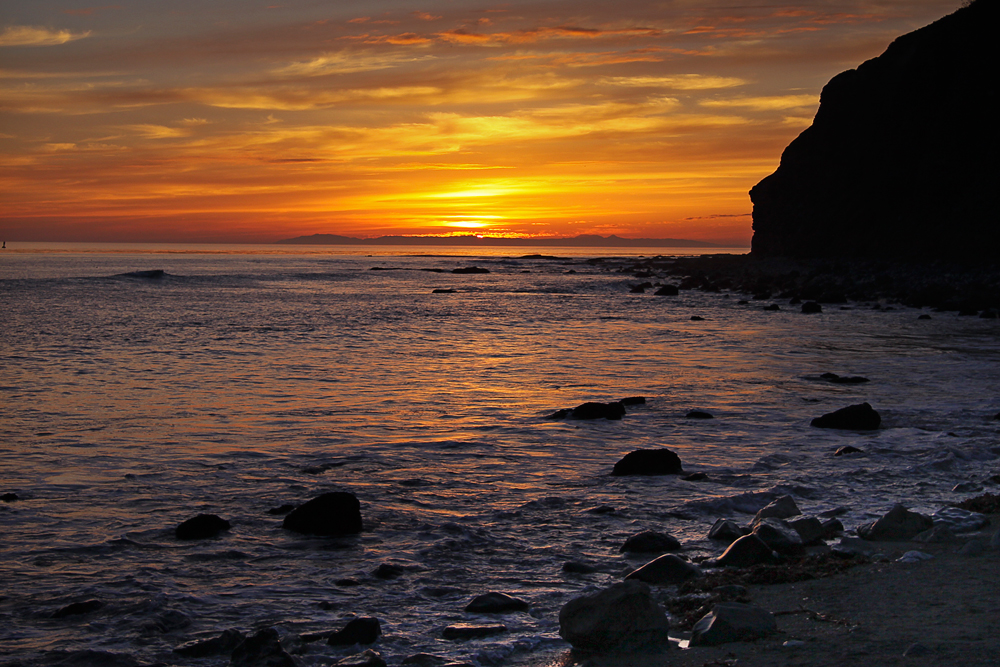
In his response, “Mina utters the Magic word: Change”, John recalls our first shared outing as a trio:
It is typical of strong personalities that getting to know them can sometimes be difficult and a little dangerous. This was the case, though we didn’t know it at the time. We ventured out to Dana Point Harbor, a sanctuary of mine that was shared when I brought Tommy there. It was essential that Mina be involved in places like this, places that mattered.
We had a lovely walk along the jetty and then along the marina, with the wind whipping through the canvas coverings on the boats and making a sound like a ghost streaking past and moaning. I spoke ‘ghost’ and Mina had a laugh and all was as it should be.
It’s bittersweet to read those words now, knowing all that followed.
As I read through John and Amy’s posts, I am reminded that they were exchanged between August 20th and August 22nd, 2005. On August 23rd, the nine year anniversary of when they first met, a tropical depression began to form over the southeastern Bahamas. The as yet unnamed storm would more fully emerge as Hurricane Katrina two days later. Unbeknownst to all of us, just as Amy and John paid homage to one era, the end of another era was fast approaching.
The title of Amy’s post was more prophetic than she could know: “Things Change”.
In 1996, however, a different type of convergence took place, far more gradual than Katrina certainly, but no less life altering for me personally.
In that same 2005 post, John summed up my two year hiatus from New Orleans and my own meeting of the once-mysterious “AmyGuy” fairly succinctly:
Mina was just a name on an AOL message board, a strange name that neither Tommy nor I could figure out at first. It was an Anne Rice discussion board and both Tommy and I shared a certain passion for Anne’s works. This is back in the mid-90’s when AOL was still pretty much the norm for anyone non-uber-geek on the internet and it was what my girlfriend at the time had for an ISP.
Tommy had just come to stay in the townhouse he and I originally rented in Irvine, before he went to New Orleans for the first time and had to come back due to lack of funds and lack of gainful employment. He’d bounced from Irvine to New Orleans and then to Hawaii and back to Irvine again at my invitation and insistence, to save money for his next move, hopefully permanent, to New Orleans.
While in Hawaii, he’d been on the Anne Rice board and been chatting with this AmyGuy, feeling that he’d unearthed a diamond in the rough, and, believe me, that board had a lot of rough. I jumped into the board to see what he was talking about and made no friends on the board at all, mostly due to me being rather unkind to an over-serious, sadly vulnerable regular. I did have a chance to see this AmyGuy in action and thought Tommy was right, definitely a gem.
In 1996, I decided it was time to part ways with my two roommates. The timing was auspicious: John had finally called it quits with the ever-manipulative, neurotic Melissa. I ended up moving into John’s apartment on Thunder Run street, a “bachelor pad made for two” as he put it.
As John explains, the upheaval was mostly a step in the right direction, for both of us:
His Conversation with AmyGuy had continued during all this crap, via fax and phone since he had no home PC at the time. I finally became aware of its depth when he sat me down and gave me a history of the affair and an explanation of what it meant to him and what he felt it meant to her. Long and short, she was coming out to attend a conference in Irvine and they were finally going to meet. I was overjoyed, Tommy hadn’t been serious about anyone for ages and I loved seeing him finally getting what he deserved.
It turns out that Amy’s AOL screen name was simply an amalgamation of her own first name and that of her co-worker, Guy (pronounced “Ghee”). Amy and Guy had to share an account for this fledgling new AOL service at work. Even in the late 90s, internet access was still a rare and somewhat costly privilege.
Shortly after that fateful first meeting I prepared to leave Southern California for the second time. And, once again, John was neither surprised nor delighted, but he remained supportive to the end. The only thing he expressed doubt about was the certainty of the relationship itself. “What if it doesn’t work out?” he asked. Mina was already staring down the barrel of a difficult divorce with an abusive ex-husband. If our attempt to be together didn’t work out, I’d hurt her just that much more certainly.
But I couldn’t think in those terms, not rationally. I was nervous enough as it was. I spent my last night in Irvine doubled over the bathroom sink with stomach pains agonizing over John’s question. What if this all falls apart? What becomes of us then?
By dawn, I dispensed with the previous night’s anxieties. I wanted this to work. I wanted to make New Orleans work, and I wanted Amy to come with me. I couldn’t hang my feelings for her on “What If’s”.
The idea was that I would fly out to Connecticut to stay with Amy in her Manchester apartment, find a temporary contract job up there, and the two of us would save up just enough money to fund the final move to New Orleans together.
In mid-October I left Irvine for the second and final time. Once more, I embraced my best friend goodbye. I wished aloud that I could take him with me, even though I knew full well he would never come. California was his home and that was the end of it.
Months later, I was a day guest in Amy’s work office, a small legal services firm headquartered in cold and drab Hartford, Connecticut. She had worked as a court scopist there for several years. By this time, I had become fairly acclimated to New England in its colder, greyer state of being.
Amy and I walked upstairs to discuss something we received in the mail from New Orleans: a flyer from Ethel Kidd Realty. The second floor of her office was less populated and therefore out of earshot of nosey, gossipy co-workers.
I remember staring at the flyer in disbelief. We had a chance to live in the Upper Pontalba, the oldest operating apartment in the United States. I remembered looking up at it during my first day in the city. Even then, I wondered what it would be like to live there, right at the cornerstone of Jackson Square and all of its daily bustle. Now it was actually within our grasp.
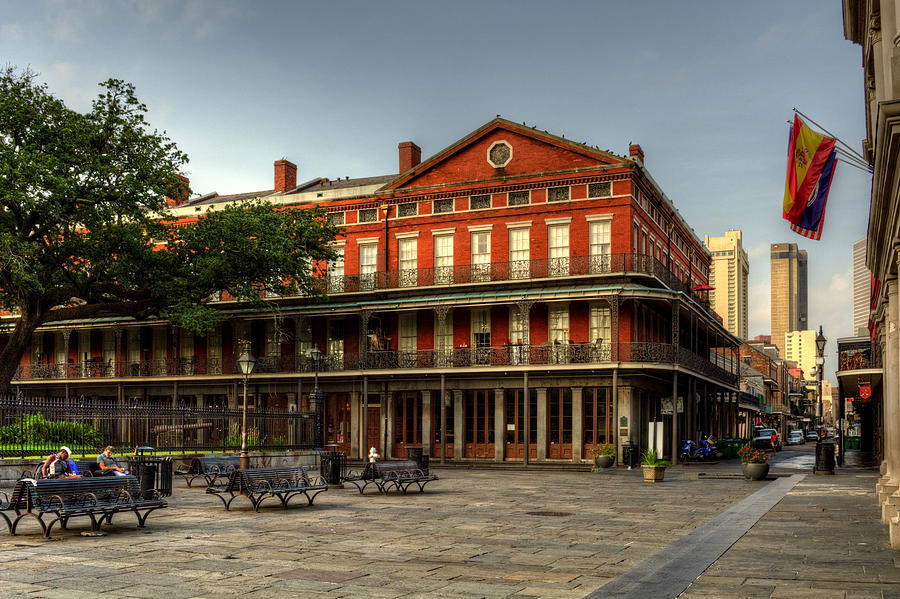
Since it would be Amy’s name on the lease (I had no credit to speak of), she had to make clandestine phone calls to Ethel Kidd to go over the details.
Mind you, we were trying to secure an apartment prior to our arrival, always a delicate and stressful venture. The Pontalba opening was the only unit the agent felt comfortable renting to us “sight unseen”. The rent was steep for the time: $1008, but it was our only (non-scary) lead so after a tense debate Amy called the agent back and said we would take it.
The apartment was on the fourth floor, and thus bereft of a fancy-pants balcony (a perk reserved for higher paying second floor residents) but, hey, it was the Pontalba.
Furthering our anticipation was the Upper Pontalba’s appearance in an Anne Rice documentary we had watched over (and over) around that time. The video included an interview with a long-time Pontalba tenant who spoke in an appropriately soft, measured voice about his personal encounters with ghosts and spirits in the building. The camera lens was softened to catch the light glinting off the tear-drop chandelier in his French Quarter living room. After a few repeat doses of that, you couldn’t get us to the airport quick enough.
By “us”, I don’t mean just Amy and I. Our last month in Connecticut saw the arrival of someone I wouldn’t have dreamed to accompany us until it was already happening: John.
As I said, my best friend was born and raised in Southern California, and that was his comfort zone in almost every respect. I’m also compelled to note that John, bless him, was not known for his limitless patience or lust for change—at least not up to that point.
Yet the John I knew in 1997 had begun to reach a pinnacle of familiarity with his personal and professional life he found strangely unnerving. He tried envisioning the next 10 years of his day to day life continuing along the current trajectory and saw little more than existential boredom staring back at him—the very prospect of it felt suffocating. But what to do?
John came to visit Amy and I in late December of that year. We hung out at Amy’s work, brought him to Adams Mill* for a belated birthday dinner and, while lazing about in the upstairs apartment, we took turns indulging Amy’s nephew and niece who lived directly below us with Amy’s sister Penny.
(*—Adams is a cozy restaurant situated in a former paper mill from 1880; it’s named for Peter Adams, a Scottish journeyman who immigrated to the US, bought the mill and made a successful business of it—reputedly Mark Twain used Adams Mill paper for the writing of his books)
The kids were… kids. The nephew, an ever-caffeinated 11 year old named Bruce, professed to be a future FBI agent, a la Fox Mulder on X-Files. He sometimes knocked on Amy’s door gruffly identifying himself as such.
John, a temporary “Uncle” for hire, read bedtime stories to Amy’s 7 year old niece, Ciara, while Bruce wriggled and fidgeted nearby, chiming in with questions or observations that often threatened to break the spell. John did this for Ciara in spite of the fact that earlier in the day Ciara jumped into his lap and let rip one noisy fart after another, laughing maniacally as she did so. Most of us consider this karmic justice for John, for whom the word “restraint” is rarely applicable.
We were, all of us, the last people to inhabit that building and create memories there. I’m thankful most of them involved laughing.
When John returned to Southern California after this brief reunion, I didn’t expect to see him again for several years.
Still, being idealistic (and a tad opportunistic), I occasionally nudged John over the phone to accompany us to New Orleans. This occurred over a succession of phone calls. Amy and I had talked about the possibility of it, how it could work. The three of us could share a place together, split rent, have adventures, etc.
I never expected John to take me up on it. Indeed, every time I brought it up, his response was predictably the same as the last: a politely disinterested “No thanks.” I wasn’t prepared for the day he said “Yes”.
The dynamic between the three of us was still a question mark, but there was little doubt that John contributing to rent would be a huge plus. Amy and I alone couldn’t keep up with the Pontalba rent for very long, not on what we were earning at the time. I sensed Amy wasn’t entirely comfortable with this untested shared arrangement, but she ultimately adopted the “Our Grand Adventure” attitude toward it. We all did.
There were other complications.
Back in California, John’s younger sister was sinking badly on the financial front. He tried to help her using his own dwindling funds, money originally earmarked for leaving the state. I knew he loathed to leave her like that, at least while she was still unemployed, but he was preparing for that inevitability. Or trying to.
Amy offered to help John by paying for his one way plane ticket to Connecticut. Alas, when John didn’t make his flight, I had the unenviable task of explaining to Amy why. He called us later that evening, mortified, but what was done was done. He elected not to come after all. Not yet. The ticket was non-refundable and Amy was understandably upset, but John had stayed out of concern for his sister. Amy and I traded helpless expressions. What could we do?
The elephant in the room was visible enough: we had not even moved to New Orleans yet and our dynamic was already off to a questionable start.
A week or so had passed; long enough for John to decide that enough was enough. He was leaving. Amy agreed to pay for a second plane ticket for John, and this flight he made. Amy was relieved. I was elated.
John arrived in Connecticut roughly a month before we were due to fly out to New Orleans. He slept on Amy’s couch which he shared with our new black short-hair cat, Pandora. Woefully for John, Pandora was still more or less in her kitten stage of development. Whenever a sleeping John wiggled his feet, Pandora, unable to associate moving target from associated human, gleefully pounced upon them with her tiny claws. Amy and I often stifled laughter whenever John awoke in a black cloud of his own expletives.
Still, he was actually with us and the move to New Orleans was actually happening. Come April, the single digit countdown was upon us. Which led to the next complication:
The intersection of St. Peter and Charters that marks the corner of the Upper Pontalba in the French Quarter is very small and charming. The moving truck assigned to carry our stuff cross country was not. This was a problem.
This revelation didn’t strike until the day the movers were scheduled to arrive. We didn’t know what the truck would look like, so anything that appeared remotely out of place on a quiet, narrow Manchester neighborhood street was a likely suspect. We took turns looking out the window to spot it, like kids waiting for Santa on Christmas eve.
And then there was something. A BIG something.
Amy and I shook our heads at the massive semi slowly pulling up to the curb, first with disbelief then rising alarm. The three of us exchanged incredulous looks. No way in HELL was this monstrosity going to be able to squeeze into that teeny-tiny, pedestrian heavy intersection of the French Quarter—much less linger there long enough to unload our stuff. Even John, who had yet to step foot in New Orleans, knew that much.
We dubbed it the “Star Destroyer”, after the gargantuan pizza-shaped space ships from Star Wars.

Amy voiced her concerns with the moving company but there was nothing for it. This was the standard trailer size used to consolidate multiple moving loads cross-country and reduce costs. The movers themselves seemed to be in jolly denial about the navigational challenges ahead of them.
We were already on edge about money, as well as the strict no-pets policy, and now this. Amy tried not to panic. I defaulted to stubborn resignation. “They’ll find out when they get there,” I said. “Someway, somehow, they have to get our stuff to us.”
Amy wondered if we would end up having to pay more for the movers to transport it from the larger (mammoth really) vehicle to a smaller one, like a U-Haul.
Worse, what if they expected us to procure the smaller vehicle for them? That could take days, yet our temporary street permit for offloading would only last for a few hours.
I shrugged off this whole scenario in its entirety. “That’s on their dime. I’m not not paying for that and you shouldn’t either.”
I could see she wasn’t convinced, but I remained defiant.
“We warned them,” I insisted.
I knew I was being pigheaded, but I was also tired of agonizing over things we couldn’t control.
“Okay, but what if…”
Back and forth we went. In the end, we had little choice but to wait and watch.
That anxiousness aside, I remember us feeling pretty giddy overall.
Evenings leading up to moving day were spent enjoying Vic’s Pizza, episodes of Friends followed by cold bottles of Dixie “Blackened Voodoo” beer.
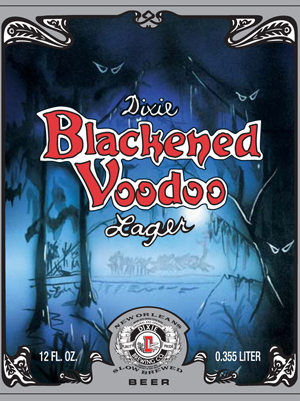
We listened to Dixieland classics as we imbibed. Some of the early Louis Armstrong numbers, like “Rockin’ Chair” and “Sleepy Time Down South” had an added poignancy: John and I used to listen to these “house favorites” back in Irvine, usually in the morning while we ironed our work clothes. I remember picking up these albums long before returning to New Orleans seemed financially feasible.
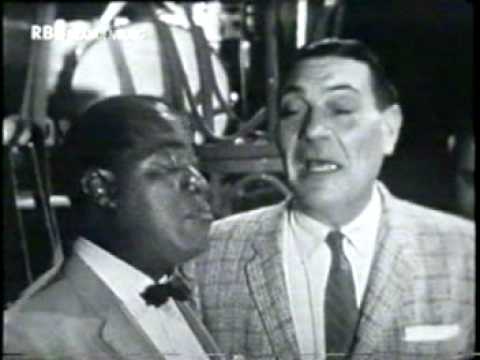
Now, several months later, we were listening to to those very same classics as evening snow drifted past Amy’s living room window. As “Pops” and Jack Teagarden crooned in the background, we shared a (nervous) toast to the adventure before us.
The eve of the move was predictably stressful, certainly physical. Mostly for John and Amy, since I had to work that day.
We opted to leave a lot of Amy’s inexpensive furniture behind (a decision we would come to regret). She had a beautiful four poster bed frame, so that was going. Books and clothes hastily made it to multiple boxes. That’s what I remember most really: an assembly line of odd-shaped boxes.
The narrow staircase from Amy’s second floor apartment led down to an entryway scarcely wider than a phone booth. This cramped space elicited a great deal of sweating and swearing from all three of us, but we hauled most of her stuff into the Star Destroyer as planned.
Later that night, we went down to the first floor to watch X-Files [episode: ‘Zero Sum’] with Amy’s sister Penny and eat Vic’s Pizza one last time. Vic’s was just up the block from Amy’s apartment, and they served up decadent thick crust pizza sliced into square shapes just dripping with cheese. I still miss Vic’s, even now.
After X-Files, John and I lugged down a chair and two sofas to Penny’s place and we took to sleeping on the floor—John in the living room, Amy and I in one of the bedrooms. None of us slept particularly well, each of us lost to our thoughts what the next few days would bring.
We rose before dawn and took hurried showers. There was also the matter of corralling the two cats. Amy had laid the groundwork for getting Pandora comfortable with her new carrier, the “Furrari”, a few days before we left. Thus, getting her to trot inside the morning of the flight was a non-event, almost certainly because she didn’t realize that “flight” was involved.
Amy’s aging Siamese cat, Mina, was far less enthused about the morning’s activities. All of the furniture upstairs had disappeared practically overnight, and this cat was old enough and smart enough to sense that all of this sudden upheaval portended nothing good for her personally. Still, Amy managed to get the pitifully resigned Mina into the “Furrari” with surprising ease.
Then the three of us piled into Penny’s car and left for the airport.
As I said, we were the last to inhabit that Manchester apartment, upstairs and down. Not long after Amy and I moved out, the whole structure was sold and leveled to the ground. The grassy slope Amy’s niece and nephew used to slide down with makeshift sleds on snowy days is now a parking lot. The lot serves the box-shaped building that resides there today: “We Can Clubhouse”, a mental health services community center.
I don’t remember much about the drive to the airport. I think I spent most of the trip blearily staring at the road ahead of us.
I couldn’t begin to imagine what John was thinking. This whole venture was so far outside of his comfort zone I marveled that he was there with us at all.
Amy was upset but kept to herself about it. She had called up two of her longtime friends the night before to say goodbye. Only one of them answered, and purposefully so. The mess went something like this:
The first friend, Ken, had thrown us a small going away party a few days before we left. It was an intimate, distinctly New England-y gathering—muted emotions, but enjoyable nevertheless.
Amy had also gone out for a quick drink with another longtime friend, whom I will call “Grimace”. This was on the Wednesday before we left. When Amy tried to call her on Friday, the eve of our flight, Grimace refused to come to phone. Apparently Amy had “not spent enough time” with her prior to departing the state and took it as a poor reflection of their friendship.
Amy took this snub very hard. She spent most of the flight heartbroken over it. For my part, I still haven’t forgiven Grimace for this little stunt.
I detested nearly all of Amy’s college-era friends. Still do. John even more so. Selfishly, I thought she was well rid of the lot for the time being. There wasn’t much I could say to console her, especially after witnessing some of these emotionally stunted expressions of “friendship” firsthand during my brief stay in Connecticut.
And we had more immediate concerns, mostly over money. Always money.
John, Amy and I sat together on the flight to New Orleans. We exchanged the occasional wan smile but little else. We were too tired, nervous or upset to think straight.
I remember sun shafts pouring into the windows as our plane took gradual turns through the clouds. I was listening to Ex Voto: their cover of Bauhaus’ “Slice of Life” was well paired with the quiet-loud-quiet cadence of my thoughts, indistinct as they were.
As we began our final descent into New Orleans, the maze of moss-tinted cypress trees came into focus below us. Each of us took brief turns peering out the window. And there again was that distinct feeling, the one I recall well from two years before, that I—no, we—were about to land on an altogether different planet.
Next:
New Orleans. Part Six.
